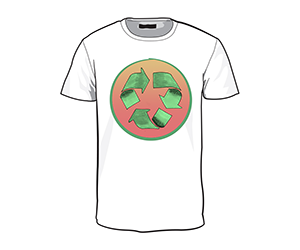 To help decide the best options for the disposable of goods, such as clothes, when no longer required or at the end of their life, a Waste Hierarchy has been developed. This has long been a guide for managing waste in the most environmentally sustainable way. At the top of the hierarchy and the most sustainable option is ‘prevention’: for clothing that means designing clothes to last longer and wearing your clothes for longer. After prevention comes ‘reuse’: passing your clothes on for someone else to wear. Then comes ‘recycling’; followed by ‘energy recovery’ and finally disposal to ‘landfill’.
To help decide the best options for the disposable of goods, such as clothes, when no longer required or at the end of their life, a Waste Hierarchy has been developed. This has long been a guide for managing waste in the most environmentally sustainable way. At the top of the hierarchy and the most sustainable option is ‘prevention’: for clothing that means designing clothes to last longer and wearing your clothes for longer. After prevention comes ‘reuse’: passing your clothes on for someone else to wear. Then comes ‘recycling’; followed by ‘energy recovery’ and finally disposal to ‘landfill’.
Clearly the best way to make clothing more sustainable is to make our clothes last longer. However, some clothing will inevitably reach what we feel is the end of its life for us – it might just not fit us, be too ‘out of date’ fashion wise, damaged, out of shape or worn-out. For many of us this means it’s not worth anything or can’t be used again and we throw it in the bin. But there is no reason for these clothes to need to end up in landfill; instead of throwing them away we should think whether they can be reused – repaired, refashioned, sold or passed onto someone else, or given to friends, family or charity shops. Already nearly half of those unwanted clothes are recycled so that they can be worn again, although many wearable items still end up being thrown away.
However, it is not just wearable clothes that can be recycled. Clothes that really are beyond wearing again can also be recycled. Currently of the half of discarded clothing that isn’t reused, only about a quarter of it is recycled; the rest is incinerated or goes to landfill. Recycling clothes uses much less energy, raw materials and resources than producing new clothes from scratch – meaning less fossil fuel burnt and less greenhouse gases emitted.
And recycling clothes isn’t difficult. Some councils collect clothing in their recycling collections, many areas have clothing collection ‘banks’ at recycling centres or supermarket or other car parks, or charity collection bags are often posted through your door. Clothes for recycling then get sorted into clothing suitable for reuse or resale, many of which are sent overseas to countries like Africa. Those that are too worn to be resold can be recycled into wiping cloths for industry, or converted back into fibres and used as padding for furniture, car seats, soft toys and furnishings, even insulation materials. All better for the environment than sending them to landfill.

The Life Story of your T-shirt
This blog was written as part of an online event run by The Institute for Social Marketing as part of the Festival of Social Science week (7th-14th November 2015).
Visit our event hub to learn more about how t-shirts are made, make decisions about sustainability and share the story of your own favourite t-shirt.
Rate and Review
Rate this article
Review this article
Log into OpenLearn to leave reviews and join in the conversation.
Article reviews